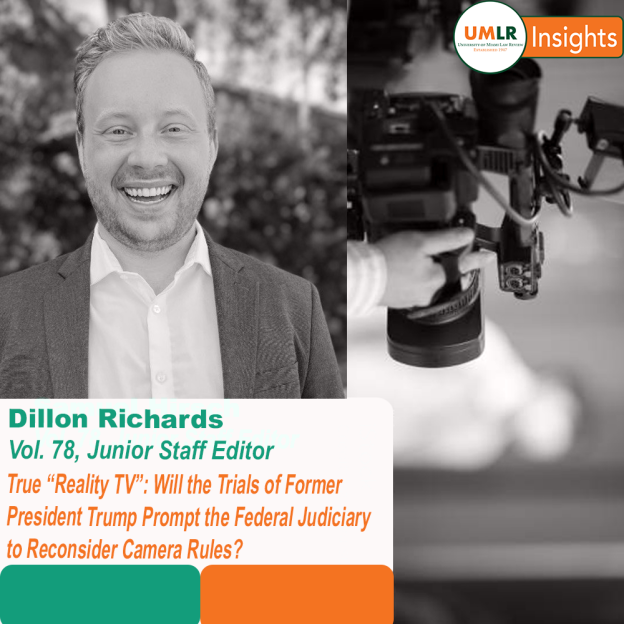DILLON RICHARDS—It would be the biggest courtroom spectacle since O.J.: a former president on trial for conspiring to “overturn the legitimate results of the 2020 presidential election . . . .” With cameras in the courtroom, cable news would cover every word uttered by the lawyers, judge, witnesses, and defendant. Social media personalities would endlessly dissect testimony and arguments. At the same time, the American people would get a rare window into the federal judiciary and could see for themselves how a trial—albeit a highly unusual one—goes from beginning to end. Indeed, the media and former President Donald Trump have both asked the District Court to allow cameras.
The debate over whether to allow cameras into federal criminal courtrooms has raged ever since the dawn of the television age. Cameras have been banned from federal criminal cases since the Federal Rules of Criminal Procedure were adopted in 1946. Two pilot programs and the COVID experience did not change that. However, Circuit Courts—and the Supreme Court—have allowed live audio from proceedings, and three Circuits allow live cameras coverage of arguments.
One source traces the hesitation to allow cameras in the courtroom to the trial of Bruno Hauptmann, who was convicted of kidnapping and killing Charles Lindbergh’s baby in 1935: “[A]bout 700 journalists swarmed the trial. People ran back and forth to send updates and some of the estimated 120 cameramen there climbed on tables to get better shots and blind witnesses with flash bulbs. Hauptmann’s appeal that the “media circus” in the courtroom denied him a fair trial was rejected . . . .”
Thirty years later, in Estes v. Texas, the Supreme Court overturned a swindling conviction because of the disruption caused by video coverage, affirming that banning cameras did not violate the First Amendment. The chaotic scene with 12 cameramen, microphones, wires, and overall disruption “was not . . . [the] judicial serenity and calm to which [Estes] was entitled.” Interestingly, Justice Harlan suggested that “the day may come when television will have become so commonplace an affair in the daily life of the average person as to dissipate all reasonable likelihood that its use in courtrooms may disparage the judicial process.”
In many state courts, that day has arrived. In Florida, for example, cameras have been welcome in courtrooms for nearly half a century, with detailed rules setting limits on their use. Television stations regularly “pool” their resources, sharing one camera and the video feed among them. High-profile criminal trials are regularly broadcast live from Florida and other states under similar rules.
On the topic of President Trump, news outlets have been able recently to live stream a hearing in his Georgia state criminal case to disqualify the prosecutor. Experts anticipate that the entire trial will be televised live. However, only those who can make it to the courthouse in person will be able to witness his trials in Florida and Washington. This incongruity in such a high-profile set of cases may prompt the federal judiciary to reconsider its policies. After all, everything else is broadcast live these days—why not trials?






